Industrial Heat’s E-Cat Exit

March 10, 2016 – By Steven B. Krivit –
Industrial Heat has apparently terminated its relationship with businessman Andrea Rossi. Industrial Heat is the only company that had publicly confirmed that it had licensed technology from Rossi.
On March 8, New Energy Times sent a news inquiry to Thomas Francis Darden II, the founder and chief executive officer of Cherokee Investment Partners LLC, in Raleigh, North Carolina, which manages the Cherokee Fund. The company operates a group of private equity funds specializing in cleaning up pollution. Darden is also the manager, president and director of Industrial Heat, LLC, one of Cherokee’s businesses. Industrial Heat issued a statement today responding to our inquiry about its low-energy nuclear reaction (LENR) activities.
Background
On Jan. 24, 2014, J.T. Vaughn, the vice president of Industrial Heat, announced in a press release that Industrial Heat had acquired intellectual property rights from Andrea Rossi.
Rossi is a convicted white-collar criminal with a string of failed energy ventures. His most notorious endeavor was his effort between 1970 and 1990 to turn industrial waste into fuel. Rossi’s company produced no fuel, instead creating toxic waste. He caused environmental damage to the land and groundwater in the Milan, Italy, area. Rossi evaded Italian law enforcement, fled for the United States and later, on his return to Italy, was arrested in the Rome airport. More than 100 articles in major Italian newspapers depict Rossi’s financial and environmental criminal history.
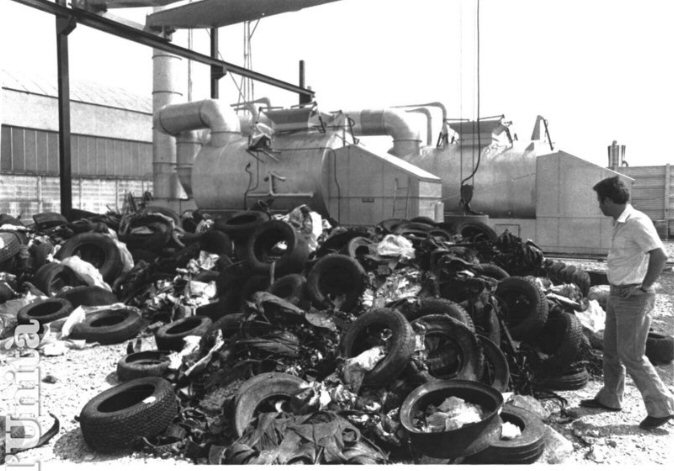
1980s: A pile of used tires and waste in front of Rossi’s Petroldragon machine. Image courtesy L’Unita
Rossi moved on to thermoelectric devices and obtained money from the U.S. government to develop devices that he claimed would generate 800-1,000 Watts of heat. According the final report from the U.S. Army, 19 of the 27 devices Rossi delivered produced nothing. The remaining eight produced less than 1 Watt each.
Since 2011, Rossi has claimed to have a LENR-based contraption constructed from an electric heater, a pump, pipes and insulation that can produce 1 million Watts (1 MW) of heat.
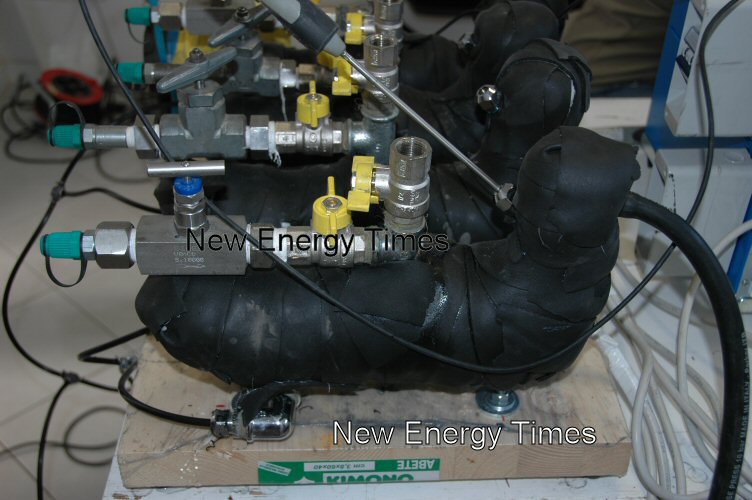
Four of Rossi’s E-Cats. Water is pumped in from the thin black tube on the left. Water, with a small amount of steam, is pumped out into the black hose on the right. (Photo: S.B. Krivit)
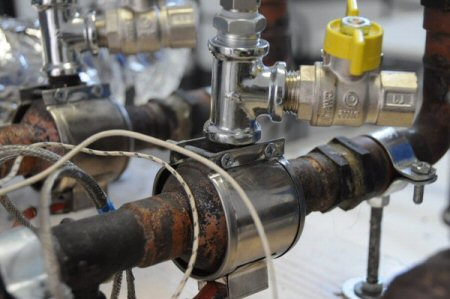
Naked E-Cat showing electric heater surrounding copper pipe. Image: Mats Lewan
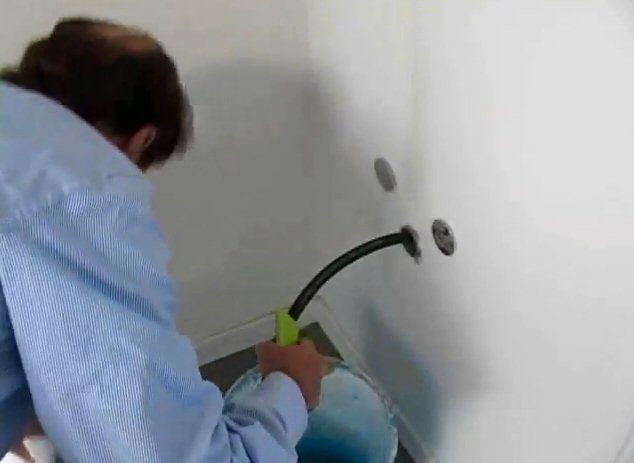
The black hose sends unvaporized water and a small amount of steam into a drain hole in the wall. (Photo: S.B. Krivit)
He named the contraption “Energy Catalyzer” (E-Cat). It has never been confirmed by a truly independent party. Rossi’s claim is suspect additionally because the state of the art in LENR experiments is a few tens of Watts and is irreproducible. The majority of successful LENR experiments show milliwatts to 1 Watt of excess heat. In other words, Rossi claimed that his system, which he has said for five years is ready to sell, produces a million times more excess heat than a typical LENR experiment.
Rossi has been running a series of demonstrations since January 2011, each time attempting to attract new scientific and financial support. He ran 13 demonstrations in 2011 and 2012. Each time that someone figured out how Rossi might have been deceiving onlookers, he changed designs.
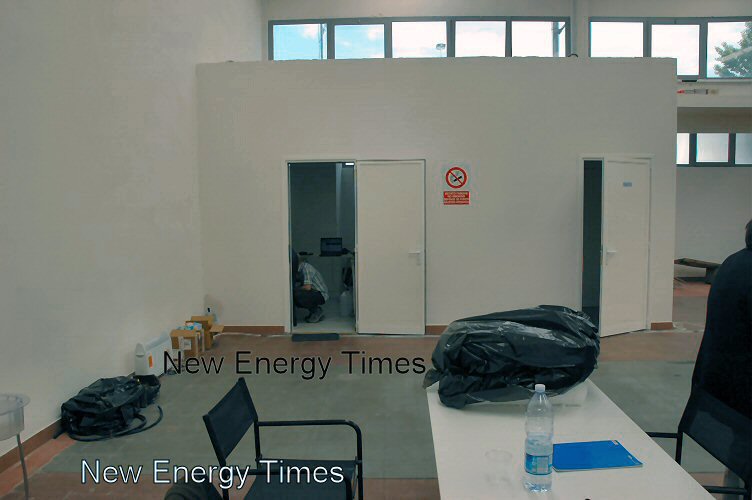
Rossi’s laboratory is on the left, a bathroom is on the right. (Photo: S.B. Krivit)
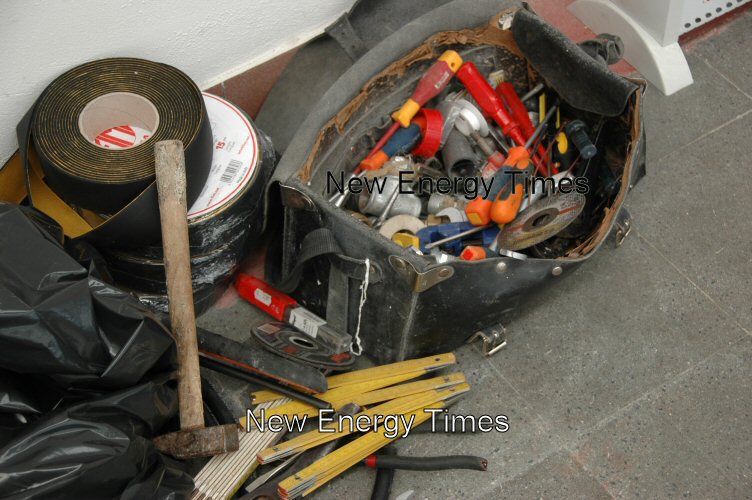
Tools used by Carlo Leonardi, Rossi’s plumber, to build the E-Cats. (Photo: S.B. Krivit)
Nevertheless, with the help of Darden and Vaughn, a total of 14 unnamed investors put $11,555,050 into Industrial Heat, LLC., according to an Aug. 23, 2013, notice Vaughn filed with the Securities and Exchange Commission.
That same month, Rossi purchased 10 commercial real estate properties in Miami Beach, Florida, for a total of $2,172,000. Within two months, Rossi purchased another $893,000 worth of property. Back in Sept. 16, 2011, according to Rossi, he was out of money, and he sold his house to finance his E-Cat.
The Jan. 24, 2014, Industrial Heat press release said that the output of Rossi’s heater was “one order of magnitude greater than conventional energy sources, [and] performance validation tests were conducted in the presence of Industrial Heat personnel and certified by an independent expert.”
The due diligence performed by Industrial Heat leaves many unanswered questions. A videotape, publicly available since June 20, 2011, reveals that the heat produced by Rossi’s contraption was not producing the amount of heat he claimed. A comprehensive, 200-page analysis revealing the weaknesses in Rossi’s claim has been publicly available since July 30, 2011.
In September 2015, Fortune magazine interviewed Darden. “Cold fusion has such a checkered past, and is so filled with hypesters and people with a gold-rush, get-rich-quick mentality,” Darden said. “We need to be calm, prudent and not exaggerate.”
Darden told Forbes, “I’m doing this for the environment.”
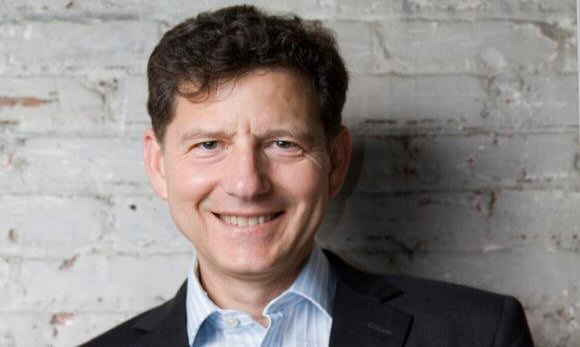
Thomas Darden
In the News
On Feb. 18, 2016, Mats Lewan, in his blog that promotes Rossi, wrote yet another “test” of a Rossi thermal system that produced 1 megawatt of heat for one year. Lewan wrote that the test was “controlled by a major independent third-party certification institute” and that the test was “undertaken by Andrea Rossi and his U.S. industrial partner Industrial Heat.”
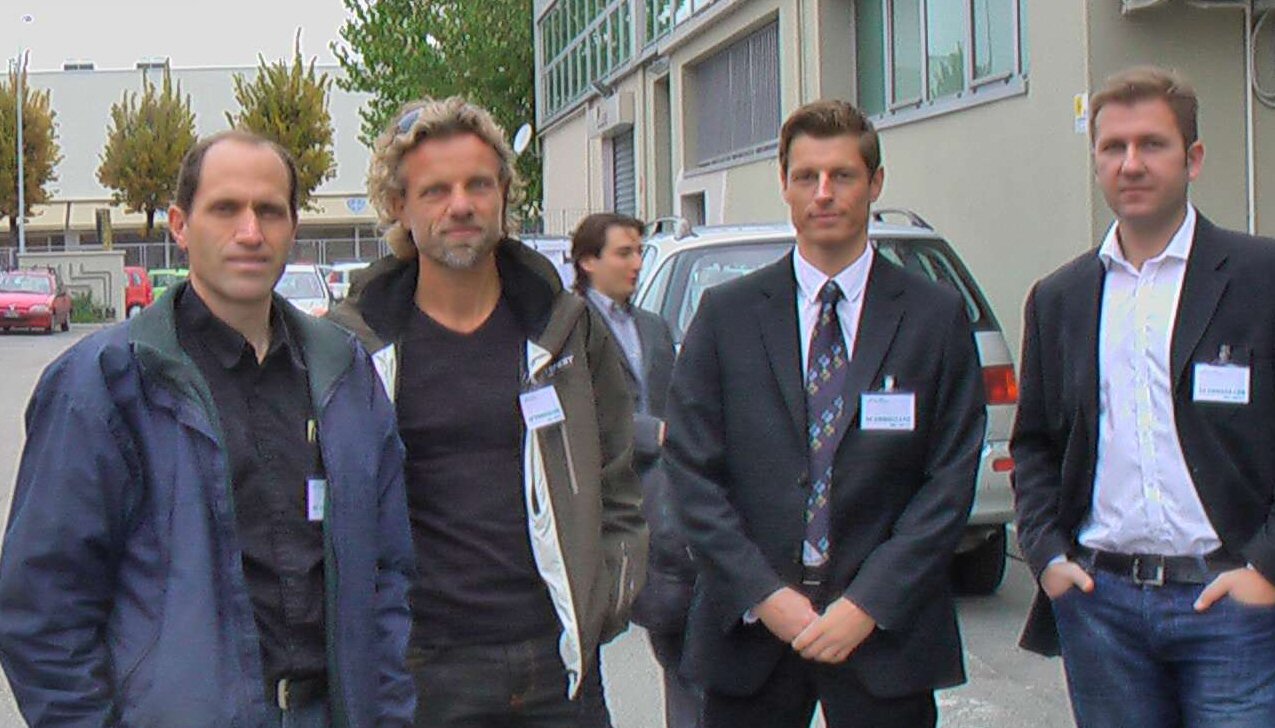
Rossi promoters Sterling Allan and Mats Lewan, and two unidentified visitors outside Rossi’s showroom, Oct. 28, 2011.
Lewan included no scientific data in his blog, cited no scientists, failed to name the institute and cited only one source by name: Rossi.
On March 8, New Energy Times sent a copy of Lewan’s blog post and our questions to Industrial Heat about its involvement in the test. Today, we received a statement from Industrial Heat. The statement explains the company’s objectives with LENRs. It mentions nothing about Rossi, his company Leonardo Technologies, or his 1 megawatt heater. The statement mentions nothing about any test, let alone the test Lewan said Industrial Heat had been conducting during the past year.
The Industrial Heat statement talked about “embracing failure” and “premature proclamations” and condemned situations in which “results are promoted and claims are made without rigorous verification and precise measurement.”
The statement contradicted Lewan’s assertion of Industrial Heat’s involvement in the test. “Any claims made about technologies in our portfolio,” Industrial Heat wrote, “should only be relied upon if affirmed by Industrial Heat and backed by reputable third parties who have verified our results in repeated experiments.”
Industrial Heat said that the company was looking into other technologies in the field of LENRs. However, among the companies and research organizations actively working in the field, no working thermal systems or experimental devices come anywhere close to the enormous 1 megawatt heat output claimed by Rossi and E-Cat promoters.
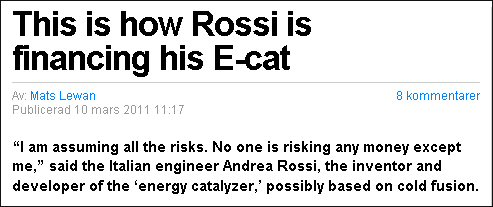
2011 Story lead by Mats Lewan
[March 12 update: Two sentences were added to the beginning of this article.]
Questions? Comments? Submit a Letter to the Editor.

